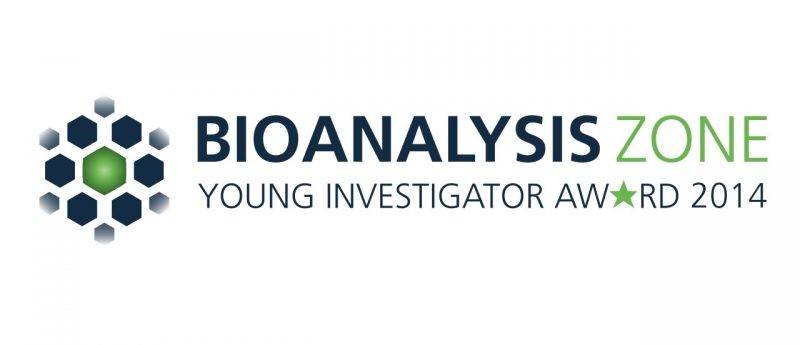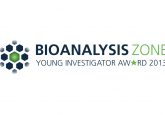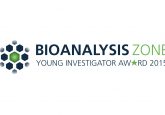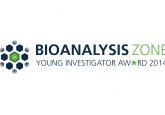2014 Young Investigator: Erika Pfaunmiller


Nominee:
Nominated By:
Supporting Comments:
What made you choose a career in bioanalysis?
I was given the opportunity to work at a biopharmaceutical company prior to beginning my research in the field of bioanalytical chemistry. During my tenure as a Scientist I at Novartis Consumer Health I worked on method development using HPLC and MS. It was that experience that sparked my interested in the area of bioanalysis. I decided to attend graduate school and work for Professor David S. Hage to complete my doctoral dissertation, where I have worked on the development of novel affinity microcolumns and affinity monoliths for biomarker detection, chiral separations and flow-based immunoassays.
Describe the main highlights of your bioanalytical research, and its importance to the bioanalytical community.
There are several facets of my research that are important to the bioanalytical field. For instance, I have examined the use of monolithic supports in affinity microcolumns (i.e., columns less than 1 cm in length) for chiral separations or biointeraction studies. In this work, I was able to design and optimize microcolumns that contained human serum albumin (HSA) and that could provide rapid chiral separations and biointeraction studies of R/S-warfarin and D/L-tryptophan in less than 5 min. Another area of my research was in the development of chromatographic-based immunoassays that utilized affinity microcolumn for detection of HSA as a model for protein-based disease biomarkers. These assays were used with both fluorescent and near-infrared fluorescent detection and could obtain detection limits in the low ng/mL range, which is a range of clinical interest for many proteins that are used as disease biomarkers. Another development was in the combined use of affinity microcolumns with immobilized protein G to examine various formats that could be used in chromatographic-based immunoassays. This work should also be important in the future use of such methods for the analysis of proteins and disease biomarkers.
Describe the most difficult challenge you have encountered in the laboratory and how you overcame it.
Some of the most difficult challenges in my research occurred in the development of affinity microcolumns for portable devices and that could use flow-based immunoassays for the detection of protein targets as disease biomarkers. This research involved learning and applying HPLC-based methodologies to a microfluidic platform. One challenge was in creating affinity microcolumns that could provide good binding but that were also capable of being used at low operating pressures and moderate flow rates for fast assays. This required precise control over the pore size and particle size of the support materials that were used to make the microcolumns and of the amount of active binding agent that was immobilized to these materials. In addition, some of these binding agents were relatively expensive and available in only small quantities. To meet this challenge, I optimized methods for handling, coupling and immobilizing these agents to create cost-effective assays. Selection of an appropriate assay design for the targeted detection range was also a challenge in such work, which resulted in my examination and comparison of various formats for the desired targets.
Where do you see your career in bioanalysis taking you?
My research in graduate school has prepared me for a career in the biopharmaceutical industry. I was able to receive extensive training in HPLC, UV-Vis and fluorescence spectroscopy. My research has helped me to learn how to prepare novel HPLC columns and to use such columns in the development of new chromatographic-based applications in bioanalysis, such as chiral separations or the measurement of proteins as disease biomarkers. I foresee my career beginning as a research scientist working for a biopharmaceutical company either in the areas of formulations, drug development or method validation. I would like to take the knowledge and training I received during graduate school and apply it to potential applications that are related to HPLC or UPLC. Eventually, as my career progresses, I would like to move into a management role where I would be able to mentor younger scientists and but continue to work in the laboratory so that I would also be able to see the continual progress of research in the pharmaceutical field.
How do you envisage the field of bioanalysis evolving in the future?
The field of bioanalysis has both exciting and interesting challenges to overcome in the future. Much of the current effort focuses on increasing sensitivity in analytical techniques such as LC and LC–MS, as well as method development in the areas of metabolite and biomarker analysis. These are just a few of the current areas of interest. I imagine in the future that the limits of detection for these applications will be improved with the continual development of nanoflow and ion mobility methods for MS analysis of compounds such as metabolites. Improvements in flow control and solvent compatibility could help in methods for analyzing complex samples using these technologies. Methods for minimizing non-specific binding in bioanalysis and in work with sample matrices such as blood or urine is another challenge. An emphasis on controlling and minimizing this non-specific binding will further be important as analytical methods are created for applications such as personalized medicine and specific biomarker detection for disease detection or treatment.
Please list 5 of your recent publications, and select one that best highlights your career to date in the field of bioanalysis.
1. Pfaunmiller EL, Paulemond ML, Dupper CM, Hage DS. Affinity monolith chromatography: A review of principles and recent analytical applications. Anal. Bioanal. Chem. 405, 2133–2145 (2013).
2. Jackson AJ, Anguizola J, Pfaunmiller EL, Hage DS. Use of entrapment and high performance affinity chromatography to compare the binding of drugs and site-specific probes with normal and glycated human serum albumin. Anal. Bioanal. Chem. 405, 5833-5841 (2013).
3. Hage DS, Anguizola J, Li R et al. Affinity Chromatography. In Liquid Chromatography: Applications. Fanali S, Haddad PR, Poole CF, Schoenmakers P, Lloyd D, Eds. Elsevier, Inc.: USA, 2013.
4. Pfaunmiller EL, Hartmann M, Dupper CM, Soman S, Hage DS. Optimization of human serum albumin monoliths for chiral separations and high performance affinity chromatography. J. Chromatogr. A 1269, 198-207 (2012).
5. Pfaunmiller EL, Moser AC, Hage DS. Biointeraction analysis of immobilized antibodies and related agents by high-performance immunoaffinity chromatography. Methods, 56(2), 56130–56135 (2012).
First choice: Pfaunmiller EL, Hartmann M, Dupper CM, Soman S, Hage DS. Optimization of human serum albumin monoliths for chiral separations and high performance affinity chromatography. J. Chromatogr. A 1269, 198-207 (2012).
Reasoning: My work involved an extensive examination of the properties of organic monoliths for the preparation of affinity microcolumns. This research improved my ability to create and optimize such microcolumns. Conditions were found where affinity monoliths containing human serum albumin could be made with up to a 2.7-fold higher protein content than previous work and allowed chiral separations of model analytes to be obtained in only a few minutes.



